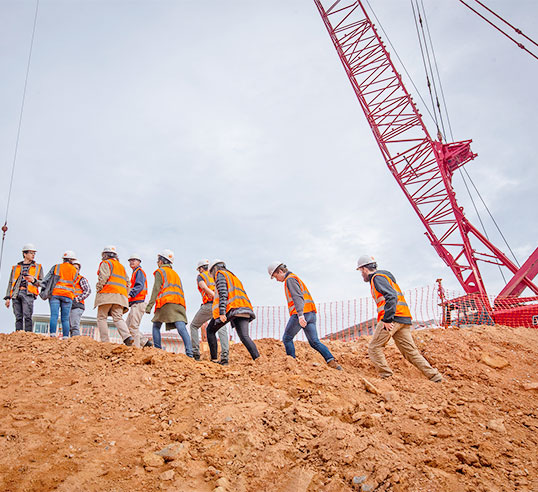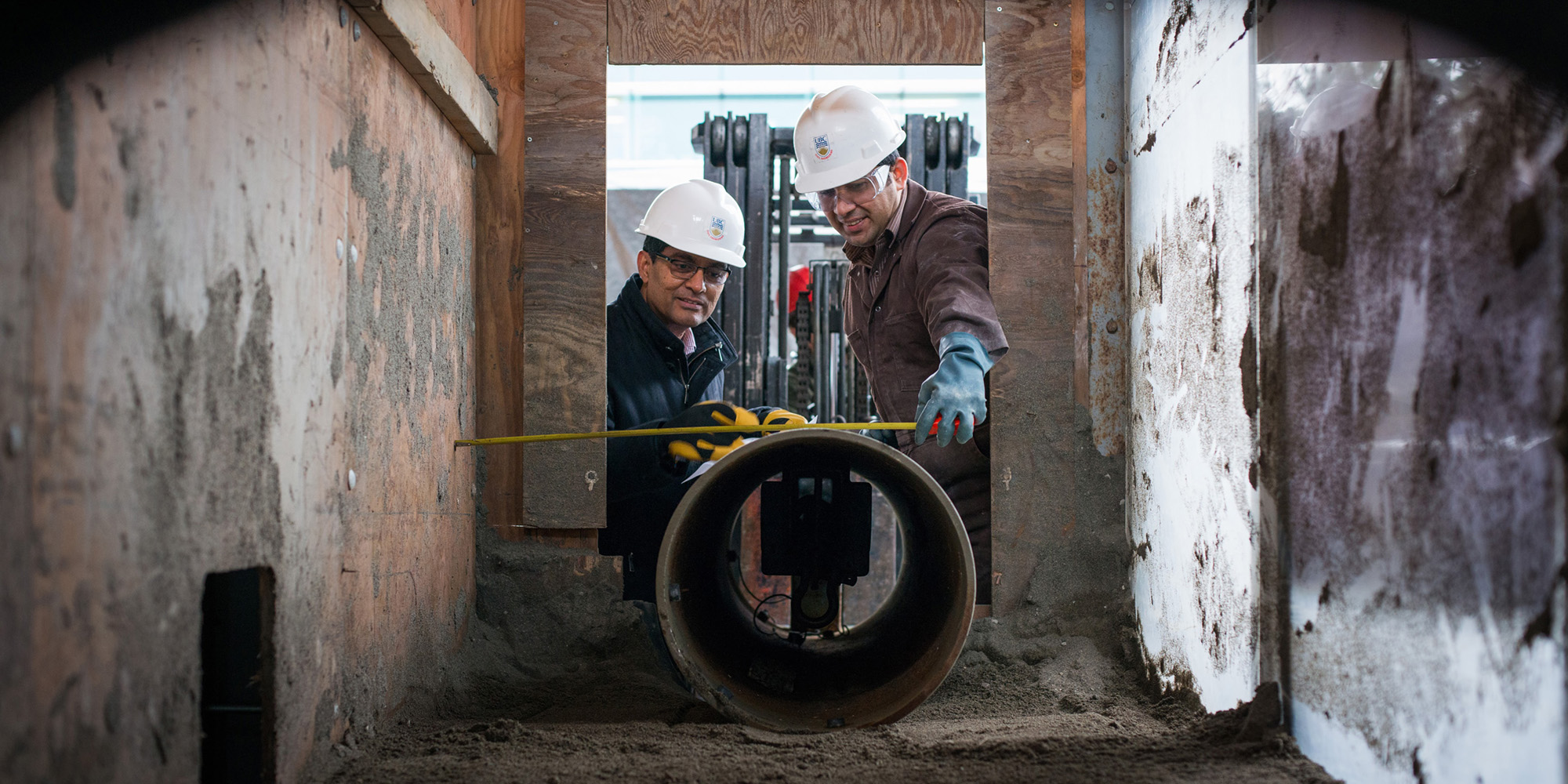Just How Geo Tech Engineering Sustains Large-Scale Construction Projects
Just How Geo Tech Engineering Sustains Large-Scale Construction Projects
Blog Article
The Crucial Payments of Geotechnical Engineers in Analyzing Dirt Actions and Foundation Style for Sustainable Infrastructure Advancement
Geotechnical designers offer as a cornerstone in the realm of sustainable infrastructure advancement, where their expertise in examining soil habits straight affects the safety and longevity of frameworks. By using innovative strategies such as Common Infiltration Tests and Cone Infiltration Screening, they carefully examine dirt residential or commercial properties, leading to educated choices on foundation layout.
Duty of Geotechnical Engineers

In enhancement to site investigations, geotechnical engineers examine prospective threats such as soil liquefaction, incline stability, and groundwater concerns. They apply sophisticated design concepts to create remedies that minimize these risks, making sure that designs follow pertinent codes and standards. Their work often includes collaboration with various other design techniques, designers, and ecological researchers to develop incorporated approaches to facilities development.
Additionally, geotechnical engineers contribute to lasting practices by promoting using products and methods that reduce ecological impact. Via their detailed understanding of soil technicians and geology, they play an essential role in cultivating safe, resilient, and sustainable framework that fulfills the needs of culture while securing the environment.
Soil Habits Evaluation Methods
Understanding soil behavior is basic to informed decision-making in geotechnical engineering, as it directly affects the style and construction processes. Various assessment strategies are used to examine dirt residential or commercial properties, ensuring precise forecasts of its efficiency under various loading conditions.
One primary approach is the Conventional Penetration Test (SPT), which gives insights into soil density and uniformity through the resistance experienced during infiltration. Likewise, Cone Infiltration Screening (CPT) offers a continuous account of dirt stratification and in-situ stamina specifications, allowing a more in-depth understanding of subsurface problems.
Laboratory tests, such as Atterberg limitations, unconfined compressive strength, and triaxial tests, are important for identifying soil behavior under controlled problems. These tests facilitate the determination of important parameters, including shear stamina, leaks in the structure, and compressibility.

Foundation Layout Concepts
Foundation design principles are crucial for making sure the stability and long life of frameworks, as they dictate just how loads are sent from the superstructure to the underlying soil. These concepts incorporate various considerations, including load-bearing capability, settlement, and lateral stability. A comprehensive understanding of dirt mechanics is important for geotechnical engineers to evaluate the interaction between the foundation and the soil.
One secret principle is the suitable option of foundation type, which may include superficial structures, such as spread grounds, or deep foundations, like heaps or caissons, depending on dirt problems and architectural loads - geotechnical eng. The structure needs to be created to minimize differential settlement, which can cause architectural damage

Sustainable Framework Practices
Just how can we successfully incorporate sustainability right into facilities practices? Sustainable framework practices start with detailed website assessments, which review dirt habits, my company local ecosystems, and resource accessibility.
In addition, using innovative construction techniques, such as using low-impact structures and recycled products, considerably minimizes the carbon footprint of framework tasks. Geotechnical designers play a critical function in choosing suitable products that enhance sturdiness and sustainability, such as making use of geo-synthetics to boost dirt security and reduce disintegration.
In enhancement, sustainable facilities practices need ongoing surveillance and upkeep to make certain that structures remain resistant over time. Ultimately, these techniques not only contribute to the durability of structures yet likewise advertise a healthier environment, aligning facilities growth with broader sustainability objectives.
Situation Research Studies and Applications
Instance researches in geotechnical design supply beneficial understandings right into the practical applications of soil actions and lasting facilities techniques. One notable example is the building and construction of the Burj Khalifa in Dubai, where extensive soil testing and analysis were conducted to evaluate the special difficulties postured by the region's loose sand and high water table. Geotechnical engineers utilized advanced strategies such as vibrant penetrating and cone penetration testing to determine the dirt's load-bearing capacity, ultimately resulting in the design of a deep foundation system that sustains this renowned framework.
Another essential instance is the remediation of the San Francisco-Oakland Bay Bridge after the 1989 Loma Prieta quake. Geotechnical analyses revealed the requirement for soil stabilization techniques, consisting of grouting and soil nailing, to improve the seismic resilience of the structure. These continue reading this treatments not just improved the bridge's safety yet likewise added to its durability and sustainability.
Such study exhibit how geotechnical designers play an essential function in comprehending dirt habits and applying cutting-edge remedies to ensure the architectural honesty and sustainability of facilities tasks. geotechnical eng. Their know-how is important in resolving the complex challenges posed by different dirt conditions throughout diverse geographical areas
Final Thought
In final thought, the payments of geotechnical designers are important for the analysis of soil habits and the layout of foundations, which are important for lasting infrastructure advancement. Through the application of advanced screening methods and cutting-edge materials, these professionals make sure the security and safety and security of structures while minimizing ecological effects. The combination of lasting techniques advertises durability in facilities projects, highlighting the relevance of cooperation amongst stakeholders to accomplish effective construction services that meet both social and ecological requirements.
Geotechnical engineers serve as a cornerstone in the realm of sustainable facilities growth, where their experience in assessing dirt actions straight influences the safety and durability of structures.Geotechnical designers play a critical click for info function in the layout and construction of infrastructure by analyzing soil and rock habits to make certain stability and safety. A comprehensive understanding of soil mechanics is vital for geotechnical engineers to examine the interaction in between the soil and the foundation.
Geotechnical analyses revealed the requirement for soil stabilization strategies, consisting of grouting and soil nailing, to enhance the seismic strength of the structure.In final thought, the contributions of geotechnical engineers are crucial for the assessment of dirt behavior and the style of foundations, which are necessary for lasting infrastructure growth.
Report this page